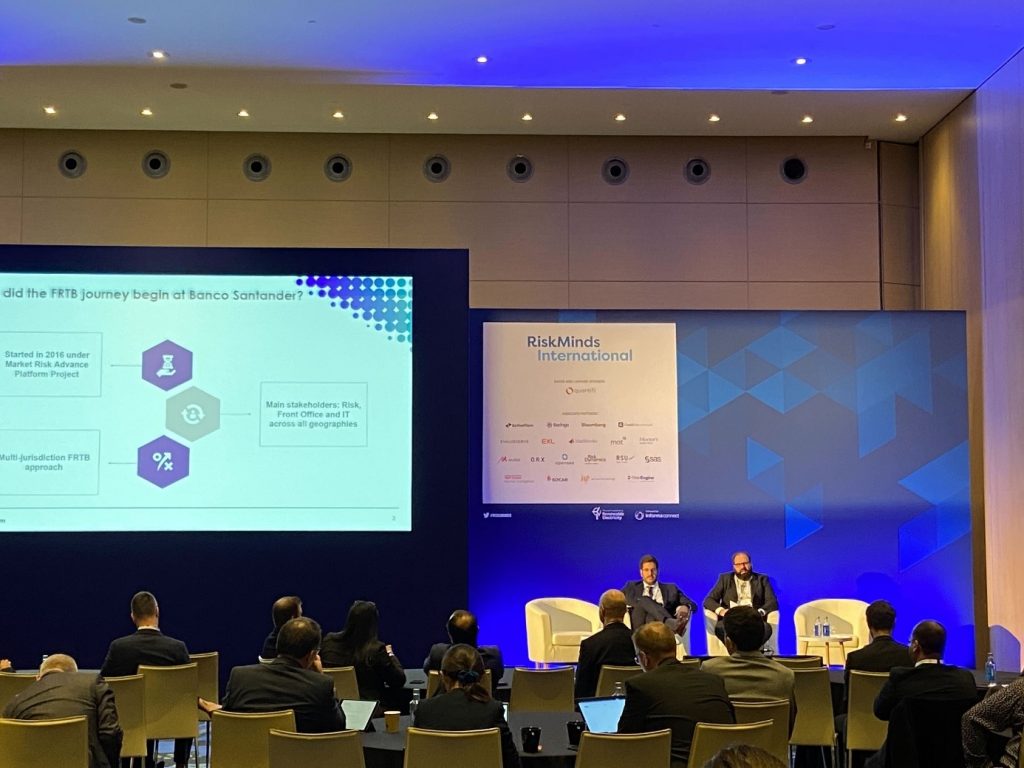The thin line between effectively managing capital and paying regulatory fines

The Fundamental Review of the Trading Book (FRTB) regulation has a big impact on banks’ capital and cost of doing business. Choosing the right FRTB solution can help a bank significantly reduce their cost of capital while also enhancing the business's capabilities in other areas such as operations, trading, data, technology and risk management.
Implementing FRTB requires a major overhaul of systems, data, processes and analytics capabilities. However, the vast amounts and types of data that must be tracked over time to maintain compliance may prove problematic for many banks. Significant changes to technological and operational processes and attention to contact points and interactions will be necessary to capture and track that data.
One such challenge is integrating an FRTB solution with current data in order to minimize non-modellable risk factors at the lowest cost. A uniform data analytics platform that serves as a single source of truth, that allows risk managers to easily identify risk exposures, bucket them and efficiently calculate the capital charge would be ideal. For nearly two decades, ActiveViam has helped more than a dozen global banks empower their decision making around FRTB and other regulations.

November 8th, Risk Minds 2022, Plenary Co-Presentation: The FRTB journey: challenges, opportunities and beyond
During the Global Risk Regulation Summit, Arturo Labanda Puerta, Risk Unit Director Market Risk Models for Banco Santander talked about their road to FRTB implementation. The bank began its FRTB journey in 2016 with the goal of creating a cohesive platform to manage market risk, FRTB being part of that. Many of the challenges Santander faced during the process resonate with all banks who are striving to adopt a streamlined way to manage the massive data volumes across geographies required by the regulation. As well, aligning Risk, IT and Front Office across geographies was an obstacle to overcome.
Arturo said that ISDA Working Groups are key to better understanding the regulation and allows for market participants to discuss best practices with one another. There are two approaches to the FRTB regulation: the Standardized Approach (SA) and the Internal Models Approach (IMA). The SA is more prescriptive of the two and banks can choose to implement the IMA on a desk-by-desk basis.
Among the challenges Arturo and his team faced in implementation were how to correlate multiple sets of data from multiple jurisdictions and use powerful analytics tools to aggregate all the data, explain it and make decisions. Market risk architectures needed to be revamped for sensitivities calculation, data and risk factors categorizations.
In the end, Santander was successful in creating a unified risk analytics platform that encompassed both market risk and FRTB. As part of its FRTB journey, the bank has reviewed all of its market risk related processes, its framework for market risk factors and achieved model convergence between front office and risk.
Another bank that has successfully completed the FRTB journey with the help of the ActiveViam’s Atoti+ FRTB Accelerator is Erste Group Bank. The FRTB regulation requires banks to report all of their entities as standalones, which triggers the need to report in multiple currencies. For Erste Group, it meant looking at foreign exchange risk across multiple (consolidated) geographies. This was further complicated by the fact that the regulator introduced several tweaks to the FRTB rules while the implementation was ongoing. “This is where Atoti+ stood out,” said Marcos Heerdt, Head of Market and Liquidity Risk Analytics at Erste Group Bank. “With agile deployment cycles and the joint collaboration between Erste Group and the ActiveViam product team, we adapted our implementation as the regulation evolved and met the project goals and deadlines.”
In sum, FRTB is a complex, data-intensive, multi-faceted requirement that involves key stakeholders across departments and geographies. The solution a bank chooses to use can mean the difference, ultimately, between freeing up capital to invest or facing punitive regulatory fines.
Visit ActiveViam’s website for more information about FRTB solution.
Jeanine Prezioso is the Head of Content for Financial Services at ActiveViam based in New York. She brings with her nearly two decades of writing and editing experience as an award-winning financial journalist, editor and researcher.